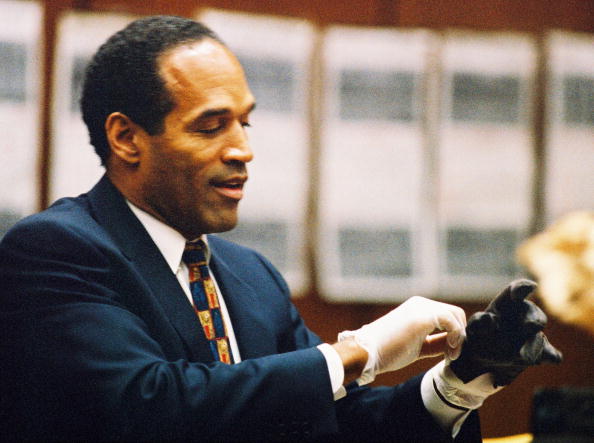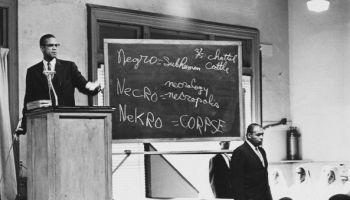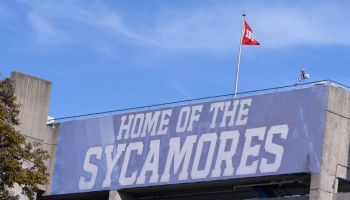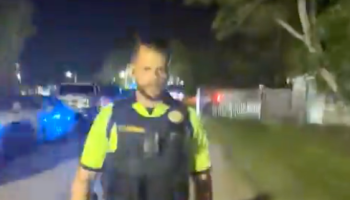The U.S. Marine Corps is wooing public school districtsacross the country, expanding a network of military academies that has grown steadily despite criticism that it’s a recruiting ploy.
The Marines are talking with at least six districts — including in suburban Atlanta, New Orleans and Las Vegas — about opening schools where every student wears a uniform, participates in Junior ROTC and takes military classes, said Bill McHenry, who runs the Junior ROTC program for the Marines.
Those schools would be on top of more than a dozen public military academies that have already opened nationwide, a trend that’s picking up speed as the U.S. Department of Defense looks for ways to increase the number of units in Junior ROTC, which stands for Reserve Officers Training Corps.
“Many kids in our country don’t get a fair shake. Many kids live in war zones. Many kids who are bright and have so much potential and so much to offer, all they need to be given is a chance,” McHenry said. “If you look at stats, what we’re doing now isn’t working.”
Last year, Congress passed a defense policy bill that included a call for increasing the number of Junior ROTC units across the country from 3,400 to 3,700 in the next 11 years, an effort that will cost about $170 million, Defense Department spokeswoman Eileen M. Lainez said. The process will go faster by opening military academies, which count as four or more units, McHenry said.
Other military branches also are aiming to increase their presence in school hallways, but the Marines are leading the charge.
In DeKalb County, which includes part of Atlanta, protests by parents and threats of lawsuits began almost as soon as the school board announced last year that it planned to open a Marine Corps high school. The district wanted to open it this fall, but the approval process in Washington has delayed that. The district hopes to open the school in fall 2010.
Critics like Mike Hearington, a 56-year-old Vietnam War veteran whose son attends Shamrock Middle School in DeKalb County, say the schools are breeding grounds for the military.
“To pursue children like they are is criminal in my mind,” Hearington said.
Between 5 percent and 10 percent of graduating seniors from the nation’s public military schools end up enlisting, according to an Associated Press review of the majority of the schools’ records. About 3 percent of all new high school graduates join the military, according to the U.S. Department of Education.
Proponents say the academies aren’t recruiting tools but focus on discipline, ethics and civics, giving at-risk teens a place where they can flourish to help battle the country’s high school dropout rate of one in four kids.
“The whole notion behind this is that there is so much literature out there and myth that kids from low socio-economic levels can’t learn and won’t learn,” said DeKalb County schools Superintendent Crawford Lewis. “We are partnering with the Marines to show if we come together and do this right, we will debunk that whole stereotype.”
The first public military school in the U.S. opened in Richmond, Va., in 1980. Since then, about a dozen have been added with the number increasing over the last five years as struggling districts look for innovative ways to meet federal No Child Left Behind standards.
In DeKalb County, the school district would get about $500,000 a year plus $1.4 million in startup funds from the Marines, Lewis said. The school would open with 150 cadets, growing eventually to about 650 drawn from a pool of low-performing students who have high test scores and want to attend, Lewis said.
The academy would be much like a typical high school, except students would wear ROTC uniforms and start each day with a military formation and inspection. Besides Spanish club and debate team, students can sign up for military drill team and color guard. The school’s principal likely will be a retired Marine.
In Chicago, the nation’s third-largest public school district began opening military academies in 1999 with encouragement from Mayor Richard Daley and then-Superintendent Paul Vallas. Vallas left in 2002 and took the idea with him to Philadelphia, where two military schools have since opened.
Chicago has six public military academies and is the only district with schools representing all four branches of the military.
For Brenda Hernandez, who will be in the first graduating class at Rickover Naval Academy in Chicago on June 10, the option let her avoid the gang-ridden schools in her neighborhood. The 17-year-old commutes an hour each way by bus and train. She credits the school with helping her shake her shy nature through one-on-one attention from teachers and ample extracurricular activities.
“I’ve come out of my shell more,” said Hernandez, who plans to attend DePaul University in the fall to major in business. “I can be more outspoken and confident in what I do.”
School districts in St. Louis, Mo.; Sarasota, Fla.; Kenosha, Wis.; Sandy Hook, N.J.; Charleston Heights, S.C., and Forestville, Md., have also started similar academies with the U.S. Department of Defense.
The academies have the support of U.S. Education Secretary Arne Duncan, who ran Chicago Public Schoolsbefore being tapped by President Barack Obama. Duncan sees the schools as another option for kids who don’t fit well in a traditional educational setting.
“For the right child, these schools are a lifesaver,” Duncan said.
Test results have been mixed.
More than 70 percent of 11th graders at Philadelphia Military Academy at Elverson scored at the basic level or better on the state math test in 2008, compared to a district average of 41 percent, according to data on the district’s Web site. For reading, 88 percent met standards, compared to 58 percent districtwide.
Meanwhile, students at the public military schools in Chicago have struggled.
Just 27 percent met standards in 2008 — the most recent data available — compared to the district average of 60 percent and the state average of 74 percent. At Carver Military Academy in Chicago, just 8 percent of students passed muster on state tests.
None of the Chicago military schools made “adequate yearly progress” last year, meaning they fell short of basic standards under the federal No Child Left Behind law.
Chicago schools spokesman Franklin Shuftan said many of the military academies replaced underperforming high schools, and it will take time for them to improve test scores and student achievement.
Chicago’s military schools did reduce chronic truancy from 24 percent to 8.5 percent from 2007 to 2008 and increased the average ACT exam score from 15.8 to 17.3, out of a possible 36.
Mary Ann Hernandez, mother of soon-to-be Rickover graduate Brenda Hernandez, enrolled her daughter because the regular public school in her Chicago neighborhood isn’t as academically challenging. She said she’s proudly watched as her daughter took Advanced Placement and honors courses and became a leader on the drill and color guard squads.
“It’s been an incredible experience for her and for us,” the mother said. “I saw it as an opportunity to get a better education for my daughter.”
















